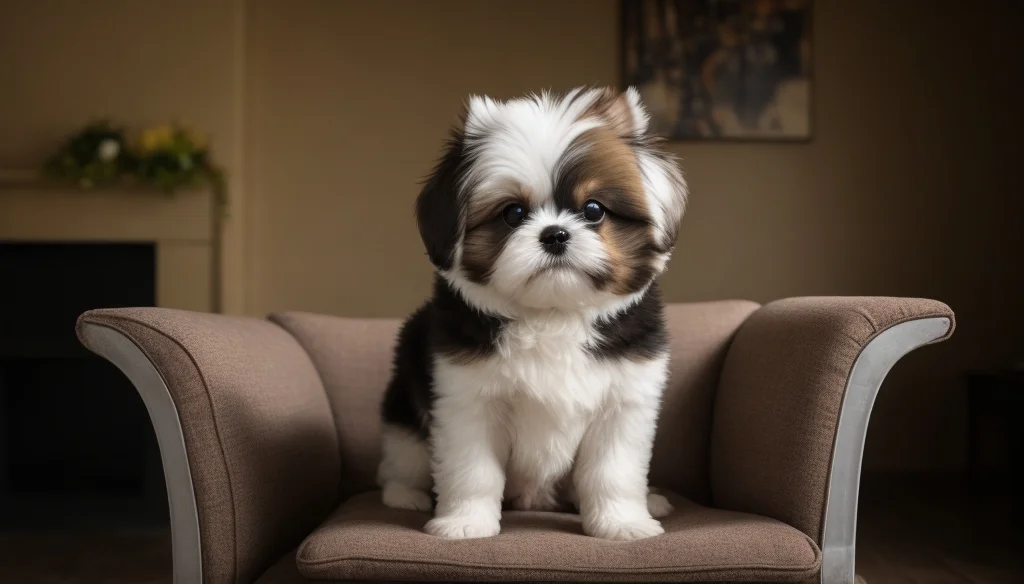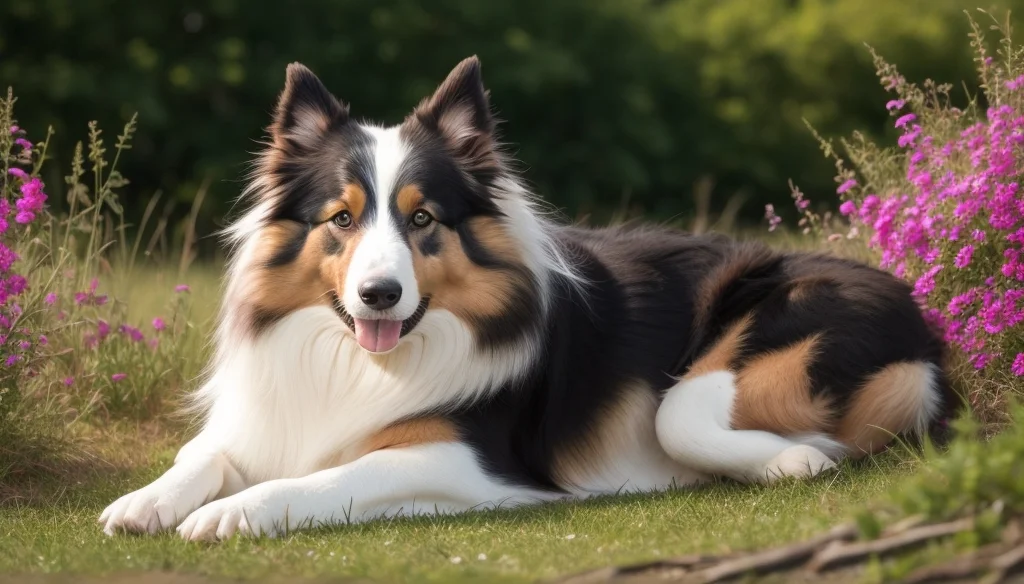Getting a new pet for your home can be fun but tricky, especially if you already have cats and dogs. Cats and dogs can get along, but picking the right dog is essential. In this article, we’ll talk about dog breeds that are good with cats. We’ll split them into small and big cat-friendly breeds. So, whether you have a small cat or a big one, there’s the best dog breed for you.
The Importance of Choosing the Best Dog Breed for Cat Breed
Choosing a dog that gets along with cats is important to avoid problems and have a calm home. These dog breeds are usually gentle and not aggressive so they can be friends with cats. They can coexist, play, and even form strong bonds, enriching your pet-loving experience.
Small Cat-Friendly Dog Breeds
Small cat-friendly breeds are adorable and practical for those living in apartments or homes with limited space. Here are some of the best small dog breeds that get along with your cats:
Pug

They are lovely little dogs with charming personalities and unique looks. These little dogs have a lot to offer when coexisting with cats. Here’s what you should know about Pugs:
- Size: Pugs are compact and sturdy dogs, making them an excellent choice for small living spaces.
- Loyalty: Pugs are fiercely loyal to their human companions, which extends to cats in the household. Their dedication fosters solid bonds and harmonious relationships.
- Adaptability: These dogs are highly adaptable, which is crucial for adjusting to different family dynamics. They can quickly adapt to the presence of feline friends.
- Playfulness: Pugs have a playful and goofy side, which can make them great playmates for cats. Their energetic bursts of playtime can keep both pets entertained.
Shih Tzu

The Shih Tzus are small dogs with graceful and gentle dogs. Here’s why they make excellent companions for cat households:
- Temperament: They are known for their calm and sweet temperament. They are not easily agitated, which is a desirable trait when living with cats.
- Affectionate: These dogs are highly caring and love to cuddle and be close to their owners. This affection extends to cats, making them feel secure and loved.
- Size: Shih Tzus are small so that they won’t intimidate cats. Their size makes it easy for cats to approach them without fear.
- Low Activity: Shih Tzus has moderate activity levels, which can complement a cat’s more relaxed lifestyle. They are not overly hyperactive and will not disturb your feline friends.
Beagle

Beagles are small hound dogs known for their keen sense of smell and friendly nature. Here’s why they can be great companions for all animals, including cats:
- Sociable: Beagles are incredibly friendly and enjoy being part of a family. They readily extend their social skills to cats and can become fast friends.
- Playful: Beagles have a playful spirit, which can create an engaging and lively environment for both cats and dogs.
- Intelligence: Their intelligence makes them trainable, and they can quickly adapt to living with cats with the proper guidance.
- Size: Beagles are small to medium-sized dogs, a practical choice for cat-friendly households.
Cavalier King Charles Spaniel

These charming dogs are known for their friendly and loving nature. Here’s why they are great companions for cats:
- Affectionate Nature: Cavaliers are incredibly loving and thrive on human and feline companionship.
- Gentle Demeanor: Their kind and easygoing nature makes them an excellent match for living with cats without causing any trouble.
- Size: They are small to medium-sized dogs, so they fit well in small spaces and are comfortable around cats.
- Adaptability: Cavaliers are adaptable and can easily integrate into a cat-friendly environment.
These small dog breeds are great buddies for your cats. Whether you have one cat or many, the right small dog can make your home happy and peaceful.
Big Dog Breeds That Are Good with Cats
A Brief Overview
If you have a more enormous cat or prefer more giant dog breeds, there are options available for you as well. Here are five giant cat-friendly breeds of dogs:
Golden Retriever

They are among the most popular and beloved dog breeds, known for their friendly and loving nature. Here’s why they make excellent companions for cats:
- Size: Golden Retrievers are medium to large dogs, but their friendly nature makes them a great choice for homes with big cats.
- Easygoing Temperament: Their calm and friendly temperament is perfect for coexisting with cats. They are not prone to aggression and are highly tolerant of other animals.
- Loyal: Golden Retrievers are known for their loyalty, not just to their owners but also to their furry companions. They quickly form strong bonds, making for a harmonious family pet environment.
- Playful: These dogs are active and enjoy interactive play, which can provide cats with both mental and physical stimulation.
Labrador Retriever

Labradors are smart, loyal, and friendly dogs, and they are famous for getting along well with cats. Here’s why they are a great addition to your family:
- Size: While Labradors are large dogs, their gentle nature makes them well-suited for homes with cats, children, and other animals.
- Intelligence: Their high level of intelligence allows them to learn quickly and adapt to living with cats. They can understand and respect feline boundaries.
- Loyalty: Labradors are incredibly loyal and form strong bonds with their human family members, as well as cats in the household.
- Playfulness: Their playful nature can keep cats and dogs engaged and entertained, fostering positive interactions.
Basset Hound

They are known for their distinctive appearance and calm, easygoing personality. Here’s why they can peacefully coexist with cats:
- Size: They are suitable for homes with cats because they’re not too big and won’t scare your feline pals.
- Calm Demeanor: Their relaxed and laid-back disposition allows them to tolerate the presence of cats without causing stress or anxiety.
- Tolerance: They are generally tolerant dogs, essential for harmonious coexistence. They are not prone to aggression or territorial behavior.
- Playful Side: Despite their calm demeanor, They can have bursts of playfulness that both cats and dogs can enjoy.
Collie

Collies are known for their herding instincts, loyalty, and gentle nature. Here’s why they are excellent choices for families with both cats and dogs:
- Size: Collies are medium to large dogs, but their gentle temperament ensures that they won’t pose a threat to cats, even larger ones.
- Herding dog Instinct: While they are herding breeds, Collies are unlikely to exhibit these behaviors toward cats. Their loyalty often translates into protective behavior towards their feline companions.
- Intelligence: Collies are highly intelligent and easy to train, allowing smooth integration into a cat-friendly household.
- Playfulness: Their playfulness can provide mental and physical stimulation for cats, enhancing their quality of life.
These giant dog breeds are great pals for your large cats. With the right introduction and supervision, your cats and big dogs can live together happily, making a calm and loving pet home.
Tips for Introducing Dogs and Cats
Introducing cats and dogs can be a delicate process, as these two species have different social structures and behaviors. However, with patience and careful planning, you can help them build positive relationships. Here are some tips for successfully introducing cats and dogs:
Prepare a Separate Space:
Before bringing your new dog home, set up a separate space for your cat. This room should be where your cat feels safe and can retreat if needed. Provide all the essentials, such as food, water, a litter box, and comfortable hiding spots.
Scent Exchange:
Swap bedding or toys between your dog and cat before they meet. This helps them get used to each other’s scents, reducing initial fear or anxiety.
Controlled Introduction:
Use a baby gate or a crate to create a controlled barrier between the two pets during the initial meeting. Allow them to see, smell, and observe each other without direct contact. This can help them get used to having cats around them.
Supervised Meetings:
Once your dog and cat seem comfortable with the sight and scent of each other, you can start supervised face-to-face meetings. Keep the dog on a leash and ensure the cat breed has an escape route. Watch their body language closely for signs of stress or aggression.
Positive Reinforcement:
Reward both pets with treats and praise during these interactions. This can create positive associations and reduce tension.
Observe Body Language:
Learn to interpret your pets’ body language. Cats may hiss, puff up, or arch their backs when stressed, while dogs might bark, whine, or become overly excited. Remove the dog or cat if their behavior becomes agitated.
Safety Measures:
Always keep the dog on a leash or in a crate during the initial stages, especially if your cat is particularly skittish. Gradually, as they get along better, you can let the dog off the leash under supervision.
Neutral Territory:
If possible, introduce them in a neutral location, like a park or a friend’s backyard. This can help reduce territorial issues.
Monitor Play:
If they start playing together, ensure it’s gentle and not too rough. Some cats and dogs can form strong bonds and enjoy playtime together.
Time and Patience:
Understand that introducing cats and dogs can take time. Be patient, and don’t rush them into a close relationship.
Consult a Professional:
If you have problems or if your pet acts aggressively, talk to an animal behaviorist or trainer.
Every cat and dog is different, so the way you introduce them might be different. The important thing is to make sure both pets are happy and can live together peacefully.
The Benefits of Having a Cat and Dog Duo
Having a cat and a dog in your household can be an enriching experience, offering a range of benefits that enrich your life. Here are the advantages of having a dog and a cat duo as part of your family:
Companionship:
Cats and dogs offer a special kind of friendship. Cats are independent, but they can be close to their human owners. Dogs are known for being loyal and always wanting to be with you. Having both pets means you’ll always have a friend, whether you like the relaxed style of a cat or the energy of a dog.
Entertainment:
How cats and dogs interact can be fun to watch. They chase, have playful wrestle, and sometimes even friendly arguments. Their interactions bring joy and excitement to your daily life.
Stress Reduction:
Research has found that having pets, like cats or dogs, can lower stress and anxiety in people. The calming purring of a cat or a dog’s wagging tail can make you feel better. Just having them around can give you comfort and emotional support.
Teaching Moments:
Cats and dogs can learn important things from each other. Cats can show dogs how to be patient by setting rules and expecting respect. On the other hand, dogs can help cats become more friendly and open. Watching these teaching moments is not only fun but also heartwarming.
Security:
Dogs are born protectors. They have sharp senses and are always alert, which can help keep your family and cat friends safe. Their protective nature can give you peace of mind, especially if you live where safety is a worry.
Exercise:
Dogs, especially active breeds, encourage exercise. They require daily walks and playtime, which can also motivate you to stay active. This benefits your physical health and keeps your pets in great shape.
Companions for Children:
If you have children, a dog and cat duo can be wonderful companions for them. They teach kids about responsibility, empathy, and the joy of caring for animals. The bond between children and their four-legged friends is often heartwarming and enduring.
Social Interaction:
Having cats and dogs can help you meet other pet owners. When you walk your pets, visit the vet, or attend pet events, you’ll probably meet people who love pets like you do. This fosters community and can lead to new friendships and connections.
In conclusion, the benefits of having a cat and dog duo in your household are multifaceted. They provide companionship, entertainment, stress relief, and valuable life lessons. Having a cat and a dog can make your life better. Their calming presence and happy interactions can improve your quality of life. It’s like having the best of both worlds, with each pet bringing something special to your daily life.
Conclusion
Choosing a cat-friendly dog breed is a crucial decision when you have both cats and dogs in your home. By selecting the right breed, you can ensure a peaceful and harmonious coexistence. Small or big, there’s a dog breed that can be the perfect companion for your feline friend.
Unique FAQs
What if my cat and dog don’t get along?
If your cat and dog don’t get along initially, be patient and give them time to adjust. Gradual introductions and positive reinforcement can help ease tensions.
Can I introduce a new puppy to my adult cat?
You can introduce your adult cat to a new puppy. Follow a slow and controlled introduction process to ensure a smooth transition.
Are there any dog breeds that are not suitable for homes with cats?
Some highly prey-driven dog breeds may not be ideal for homes with cats. It’s essential to research and choose a breed with a cat-friendly temperament.
What should I do if my cat is stressed due to the presence of a new dog?
If your cat is stressed, create safe spaces and offer plenty of attention and love to help them adjust to the new situation.
Are there any professional trainers who specialize in cat-dog relationships?
Yes, some professional trainers specialize in cat-dog relationships. They can guide how to foster a positive relationship between your pets.


